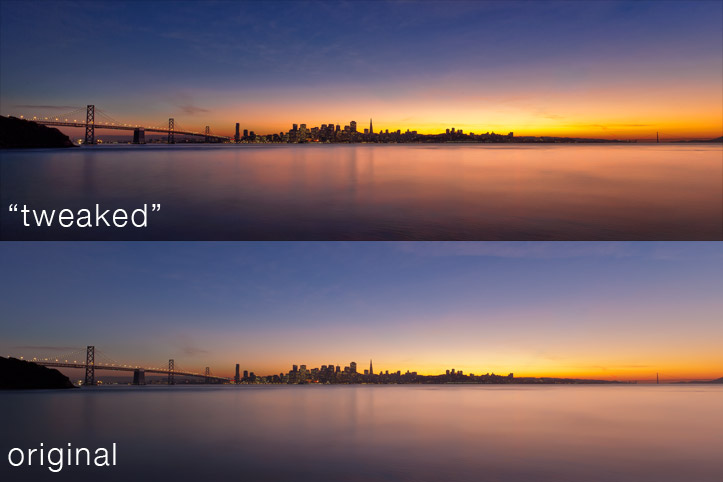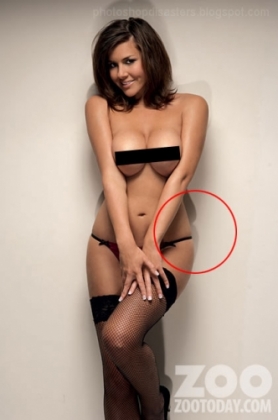It’s been a long-running debate: “How much photoshop is too much photoshop?”.
In the same way that the word “text” didn’t used to be a verb, the word “Photoshop” (obviously copyright Adobe) has become synonymous with retouching or “airbrushing” worldwide. As a digital photographer, it’s one of the key tools I use every day, and provides me with a truly “digital darkroom” when it comes to fixing those small imperfections that often appear when you finally get the shots you captured onto full screen. And in this post, I’m going to be brave and put up the before and after shots so you can see for yourselves what goes on in my world of retouching.
So, what prompted me to write about it today? This article from the Guardian, mainly. It relates to the winner of Holland’s “Next Top Model” competition, Ananda Marchildon, having to sue her agency Elite after they cancelled her contract for having hips that were 2cm wider than their specification – despite those hips apparently having shrunk since they signed her straight out of the show.
Some time ago, I noticed a lot of my friends on Facebook were posting links to this (now viral) video – “Fotoshop by Adobé” (interesting way of getting around legal issues 😉 ).
The video points out some of the features of image manipulation programs that have been used since their inception, but most importantly – what happens when they get taken to extremes. The problem is, as a photographer, the line of what is “extreme” is now becoming blurred by the client – not us – as their expectations grow and grow based on what they see in the media. You see, I hear many photographers claim (yes, claim) that they “never use Photoshop” to enhance their images. While that may be true of the particular product name, I can be 100% certain, without a shadow of a doubt, that ANY photographer who brings their work into a digital format IS using some form of image manipulation. How do I know that? – If they weren’t, let’s take the film guys, why would they output the image into printed format from a computer? I mean, if the negative is so perfect, why not just take it to the lab? 😉
Now, that’s a bit harsh, I know. But let’s be honest, even if a landscape photographer “tweaks” the saturation/exposure/contrast/level of blacks or highlights in an image, they ARE manipulating what the camera saw, digitally. And in layman’s terms, that’s Photoshopping! So with that sorted out, let’s look at the challenge facing a photographer. To do that, I’m going to pick on two very specific cases.
First off, landscapes (and I’ll use my own images so you can see what I mean!). Now, sunsets do NOT look as vivid on camera as they are often made to in print – so they are often “tweaked”/enhanced a little. Why? Because, weirdly, when your eyes see the sunset your brain actually tells you that it’s more colourful than in reality. Want proof? Set a camera up for “perfect” exposure and colour balance and take a picture of a vivid sunset (with no filters 😉 ). Now compare the image it captures to the one you remember seeing. They’re different. So, we can alter (slightly) the values of the image to bring it back to the vividness of what we intended our audience to experience as if they were with us. Below you’ll find an example of exactly this. It’s subtle (hopefully) and simply brings back the colours that I saw when I was stood looking at the skyline. Of course, some will undoubtedly prefer the original one, but enlarged to several feet across, I can assure you the “tweaked” version is more impressive!

Now let’s go to the other extreme, my second example : models. Now, I CAN manipulate an image, digitally, to within an inch of its life, and still produce a photograph that looks real. But that’s the problem – so many people do exactly that, it’s hard to believe anything we now see. Correcting imperfections has been going on since the dawn of recorded history. Do we really think a sculptor creating a statue for the Pharaohs would have left in that pimple on his nose, had there been one? Or maybe some of the portraits of the royal families from centuries ago – I dare say the words “off with his head” would have soon followed the unveiling of a painting which incorporated that pesky ingrown hair or shaving cut on the king’s chin… So, the presentation of what we’d like our audience to see (us, looking our best) is nothing new. The challenge is, where does it stop?

This section of an image was from a shot of a very good model – stunning figure, and beautiful face (no, it’s not from any image in my portfolio, so no point in searching!). The problem is, for the exact pose I wanted, even the skinniest of people would have a slight issue. So, it’s “fixed”. Along with the odd little imperfection in skin tone as well as any lines/bra marks, etc. And to be honest, I don’t believe this is wrong. Indeed, many models now arrive with breast implants – and that means only one thing to a photographer : scars to remove! So yes, they get removed. The challenge is, for all of those people who are out there banging the “natural is the only way” drum, there is the reality of a public who want to see images as they were intended to be seen by the photographer; models/clients who want to look their absolute best – “me on a perfect day” is the phrase I hear quite a lot; and of course the photographer who knows the limits of the human body and sometimes wants to get “that shot” despite those challenges.
But that is where I draw the line. “Me on a perfect day” is a good place to stop, in my book. You see, this is where I believe photographers are getting the heat, incorrectly. Not once have I ever told a model that I will be retouching/”Photoshopping” their images to within an inch of their life. No, for me, the reality is that in every single case it’s the MODEL who asks for that to be done. We can say no, of course, but it is their expectations which seem warped, not the photographer’s limits in photoshop. I’ve been asked to reduce someone from a size 14 to a size 8 before. (Yes, it’s possible and no, I didn’t do it!). I’ve been asked to reshape upper arms because every other image in the model’s portfolio showed them “improved” and therefore mine wouldn’t match. I’ve even been asked to remove a feeding tube scar before now.
 You see, in the world we now live in, with the tools that are available – everyone’s expectations have changed. They no longer want to be “them on a perfect day” – they want to be someone entirely different. And in fact, many believe they are. This case with the model in Holland, therefore makes me laugh. I guarantee this agency has models on their books who have “photoshopped 90cm hips” – so something else must have gone on here for it to get to that point, but the challenge remains the same: With expectations getting higher and higher, and tools becoming more and more powerful – where does it stop?
You see, in the world we now live in, with the tools that are available – everyone’s expectations have changed. They no longer want to be “them on a perfect day” – they want to be someone entirely different. And in fact, many believe they are. This case with the model in Holland, therefore makes me laugh. I guarantee this agency has models on their books who have “photoshopped 90cm hips” – so something else must have gone on here for it to get to that point, but the challenge remains the same: With expectations getting higher and higher, and tools becoming more and more powerful – where does it stop?
Of course, these things don’t always go smoothly. “Liquifying” people also tends to liquify the background, leaving tell-tale signs. Shadows also seem to be one of the biggest give-aways for when someone’s not exactly playing fair with body shapes (see left!). For those who’d like a chuckle at some of the monstrosities it’s possible to create when the Photoshopping goes a little wrong, check out Photoshop Disasters – you might be surprised!
At some point, could it become pointless photographing a subject – just digitally piecing them together from all the best component parts instead? I, for one, sincerely hope not and will continue producing images from my photo shoots of people simply as “them on a perfect day”.
🙂
